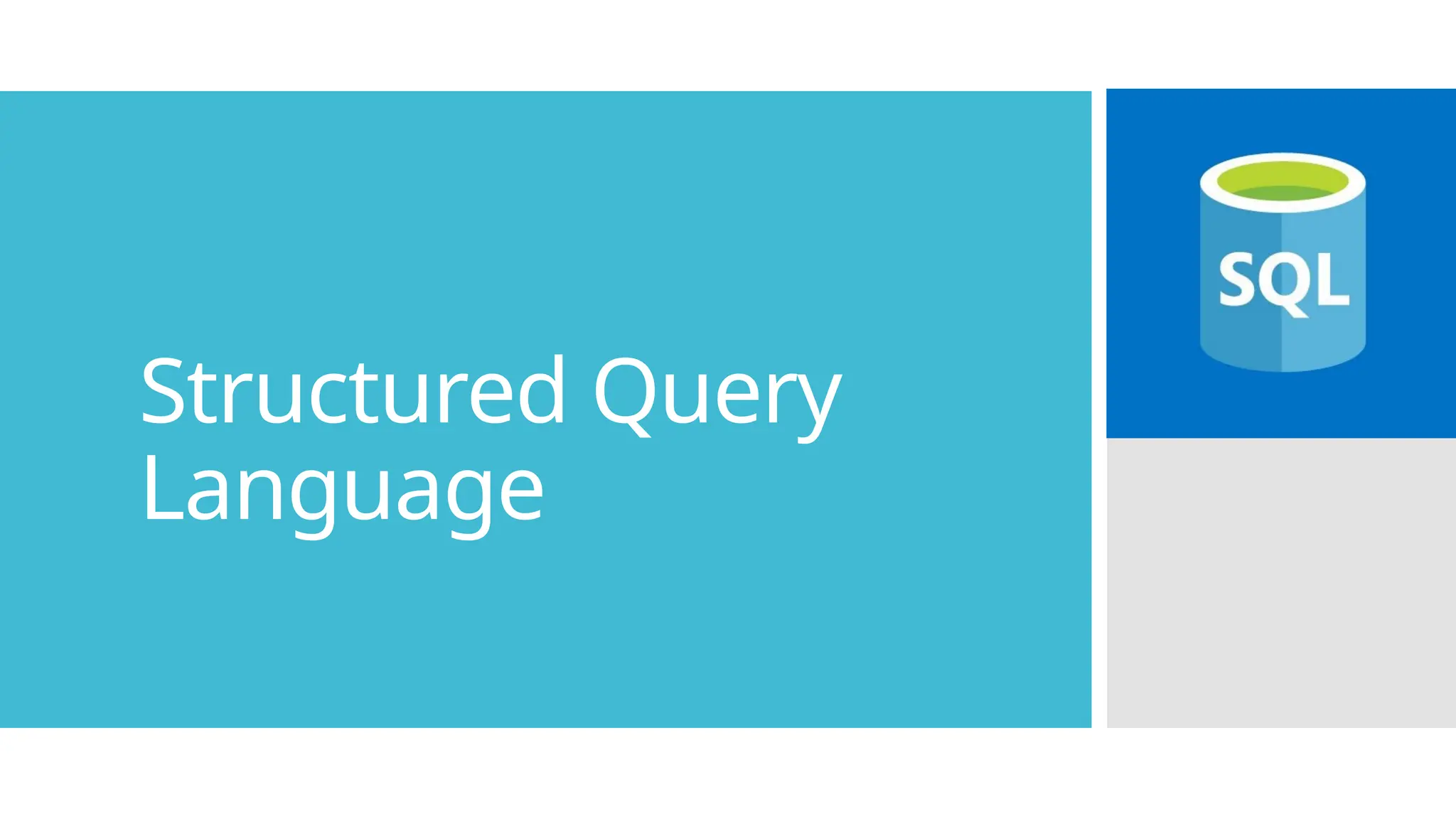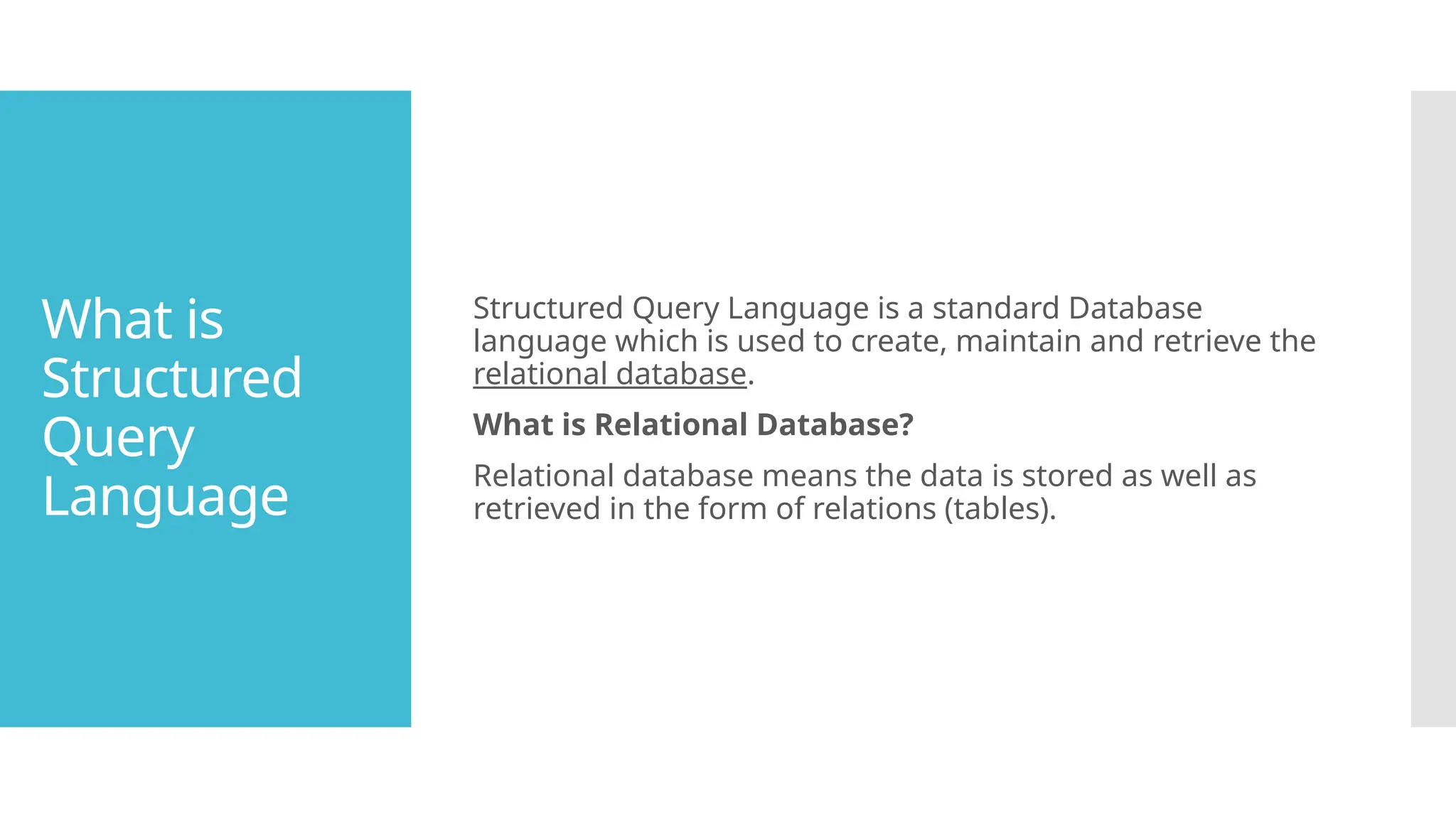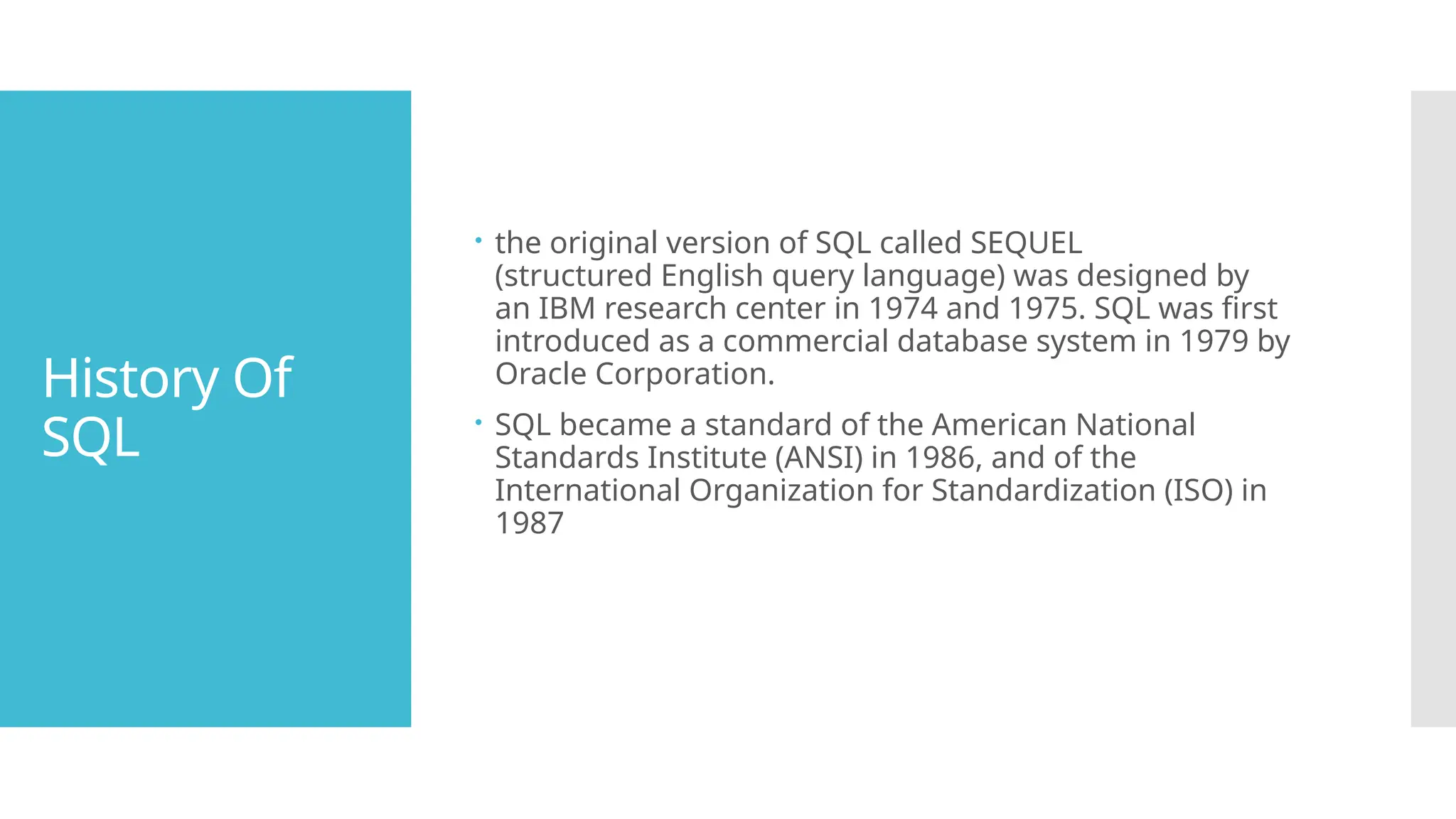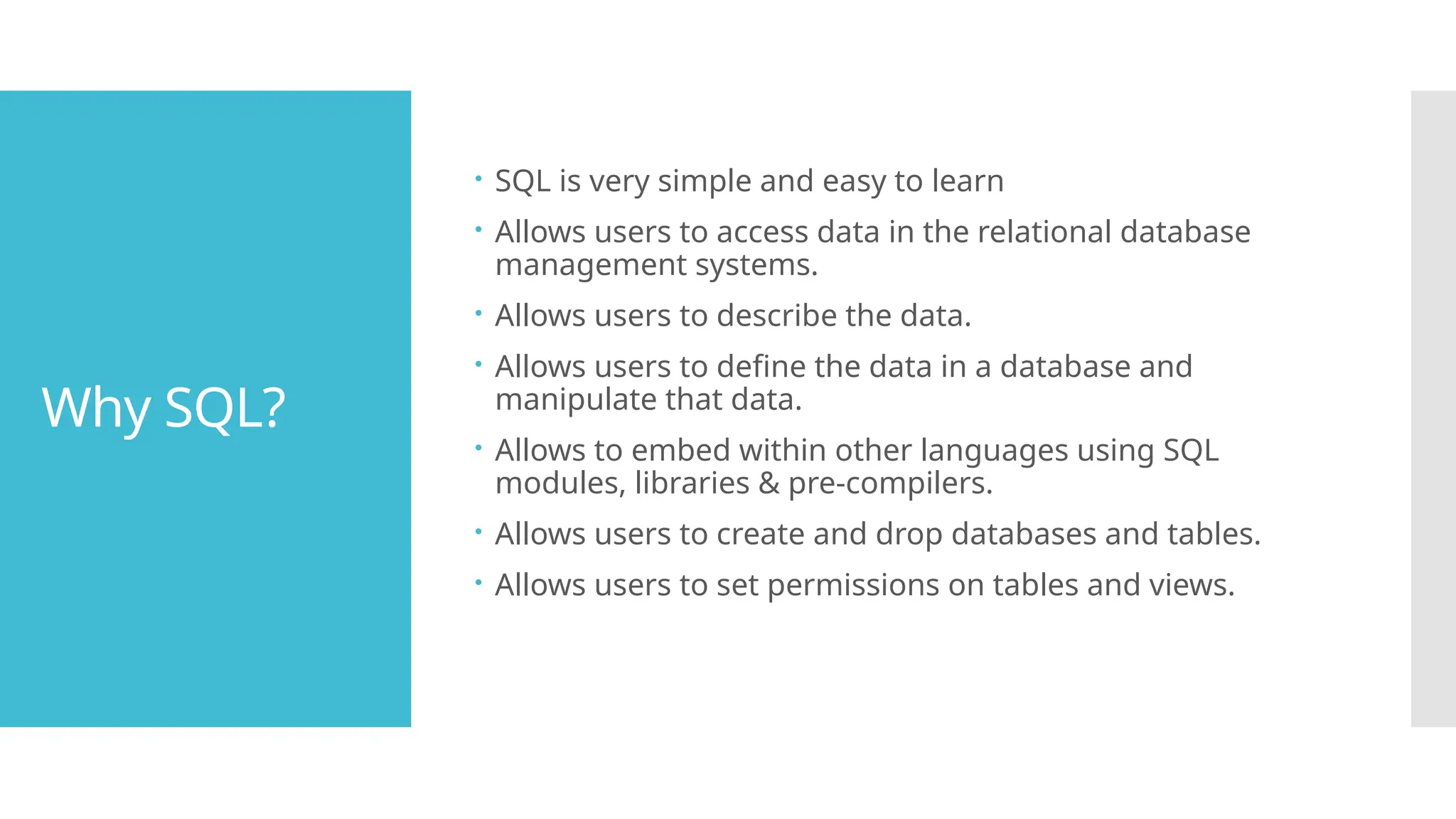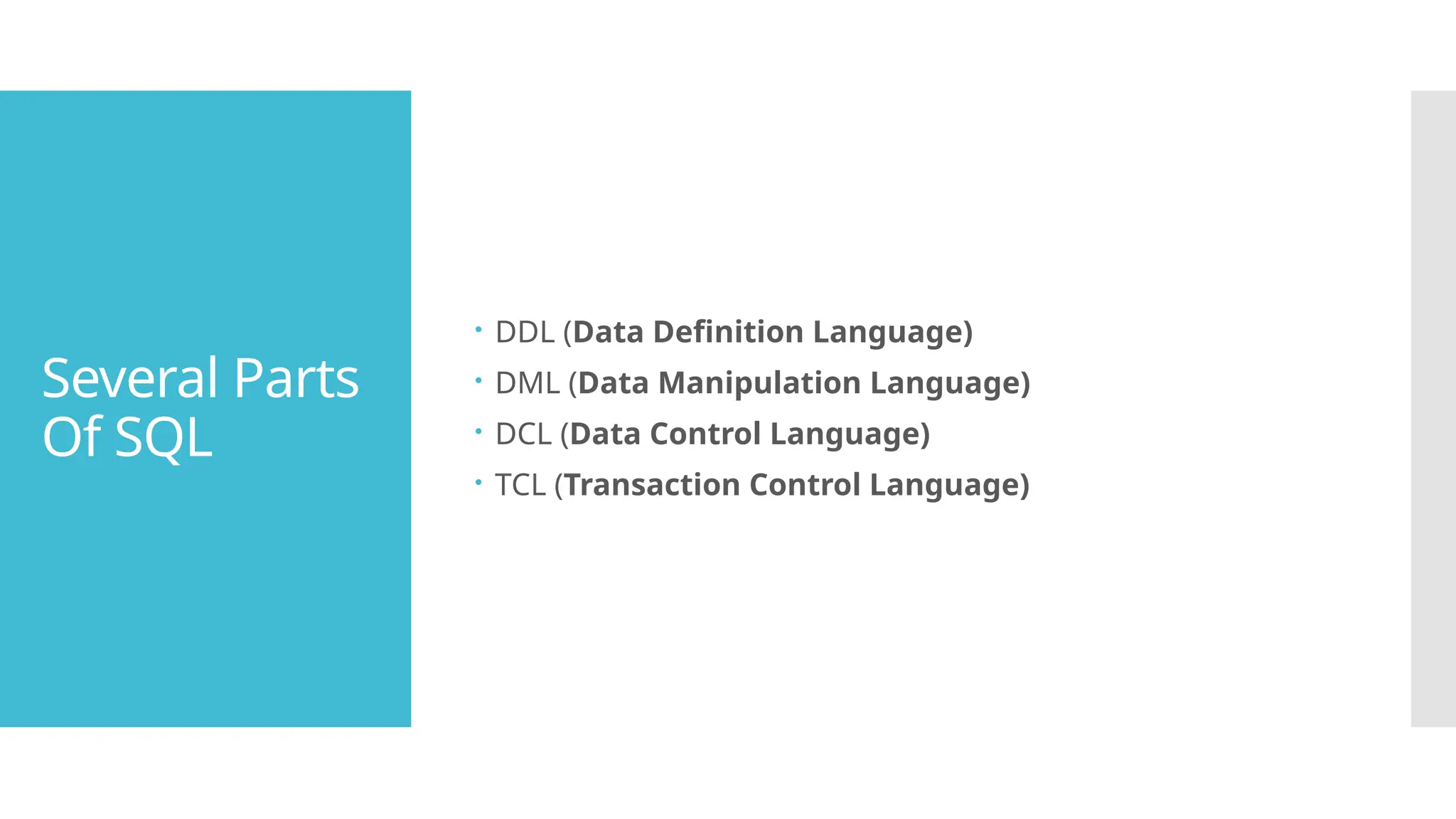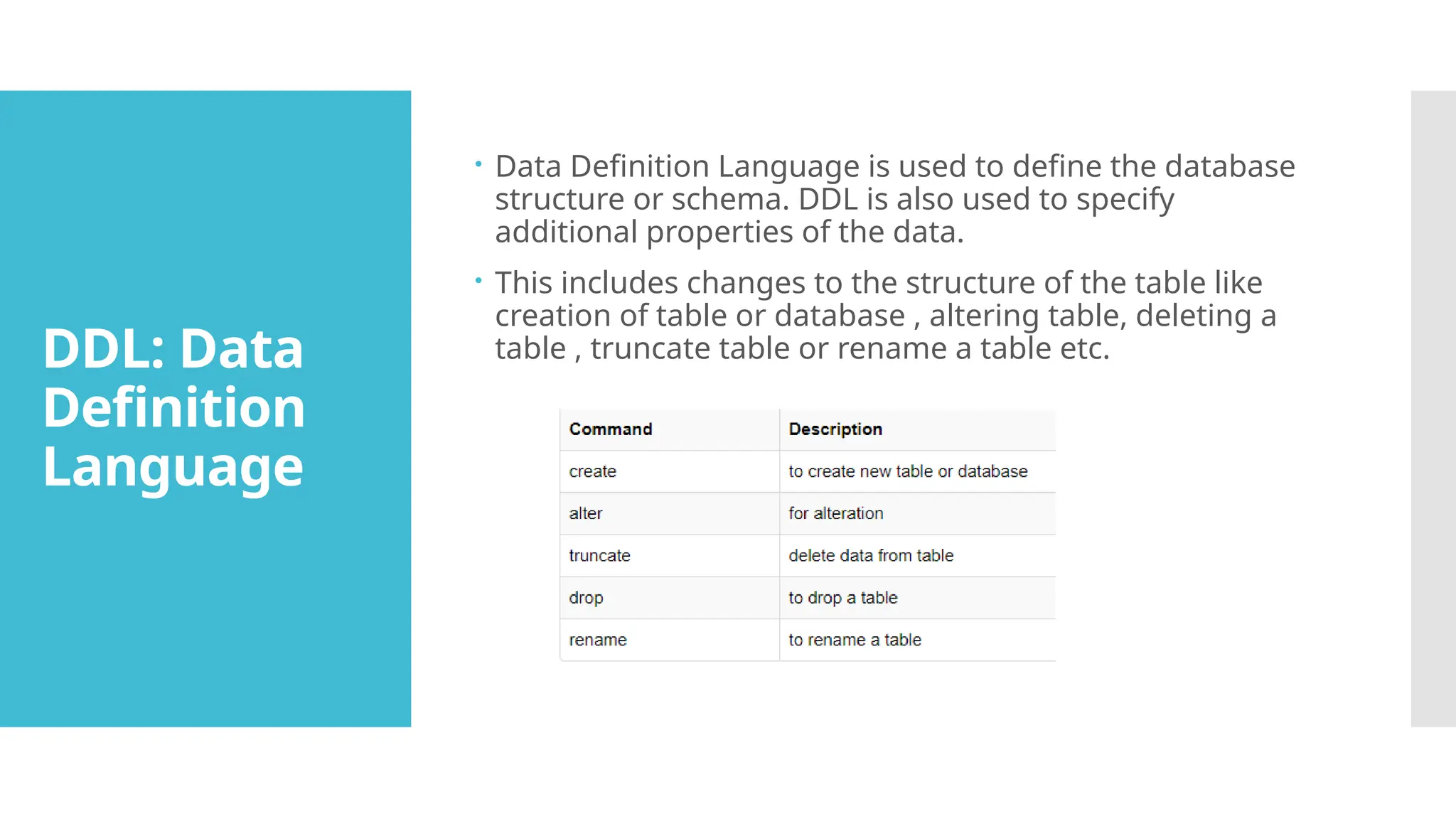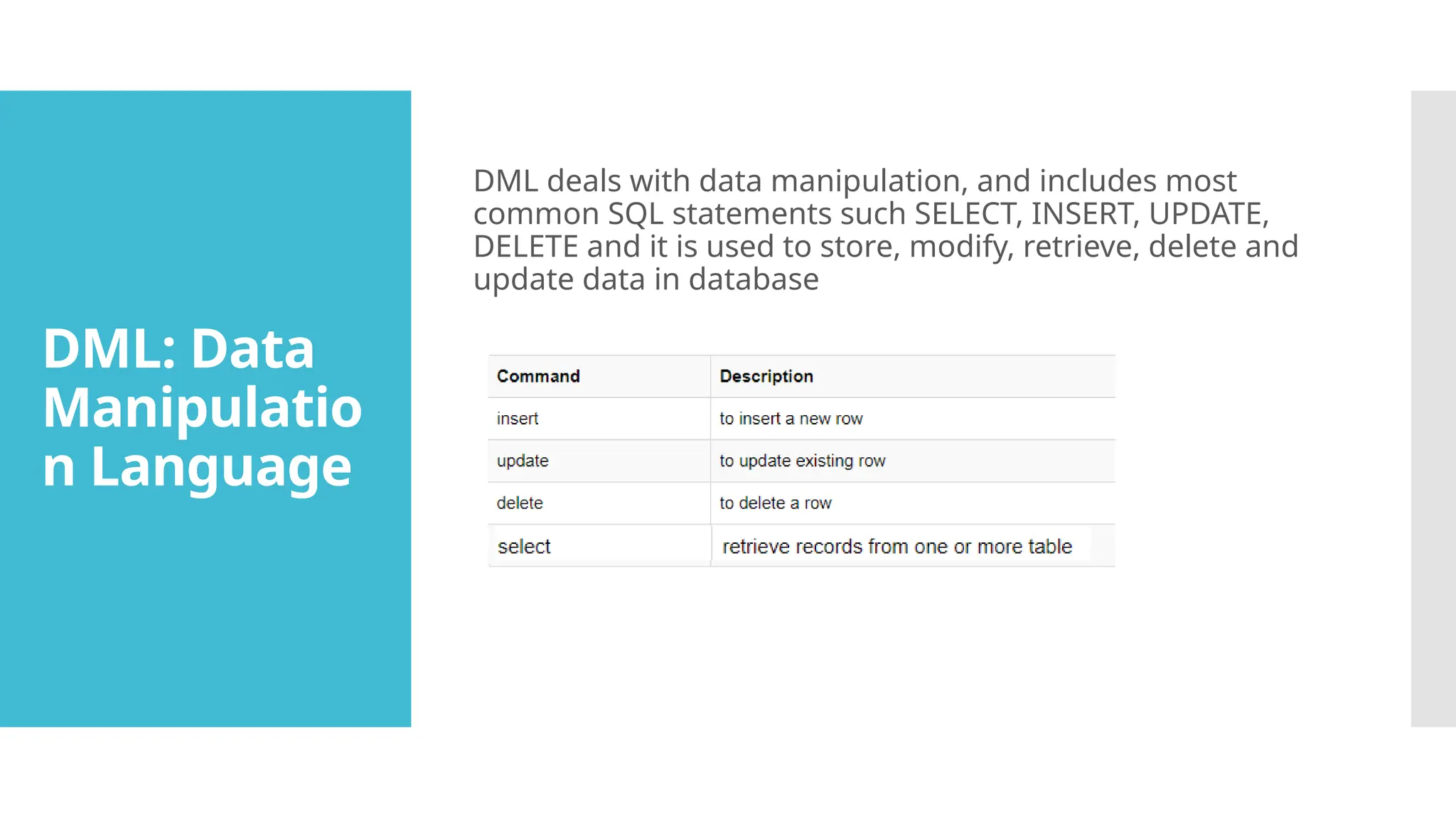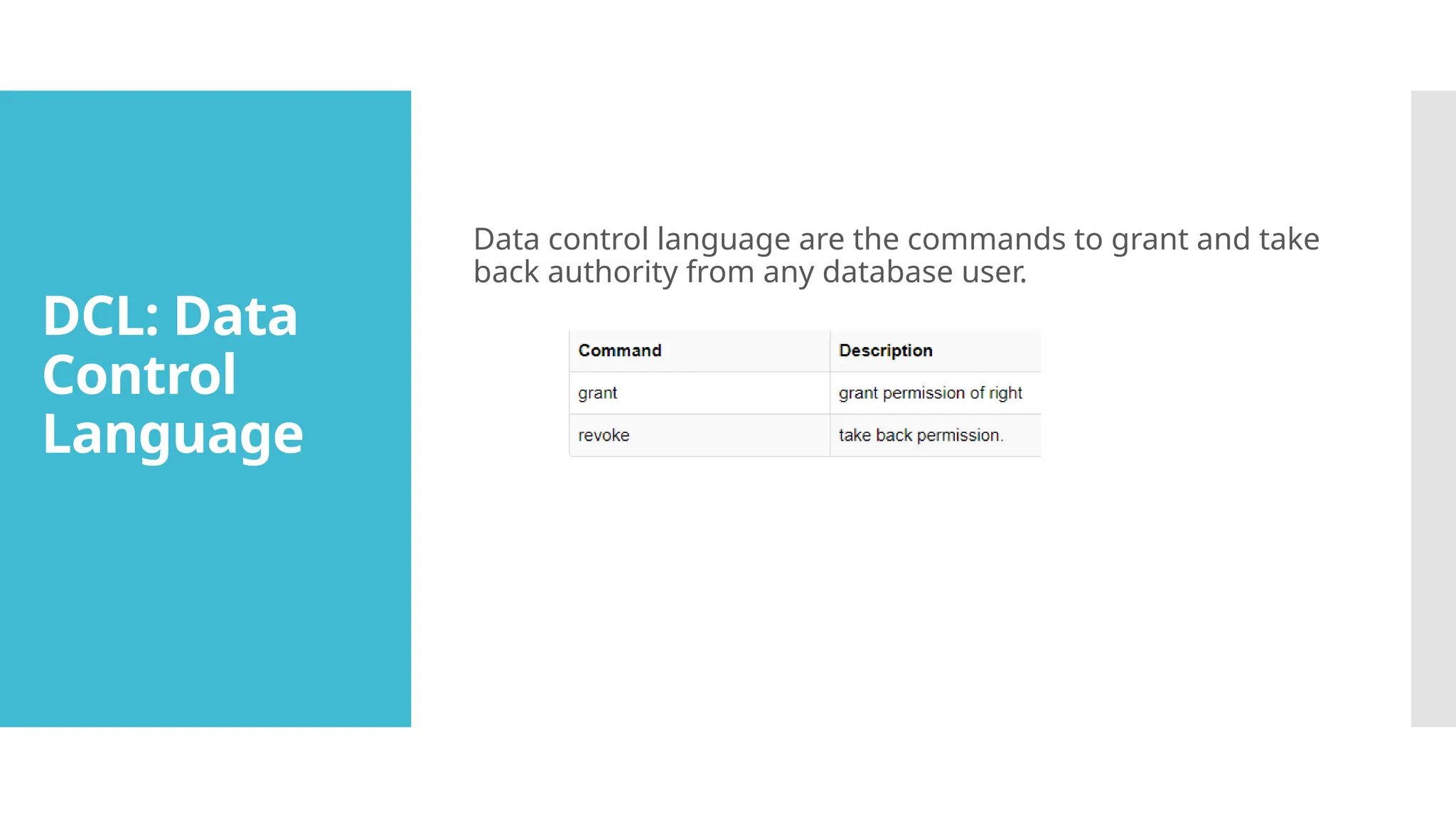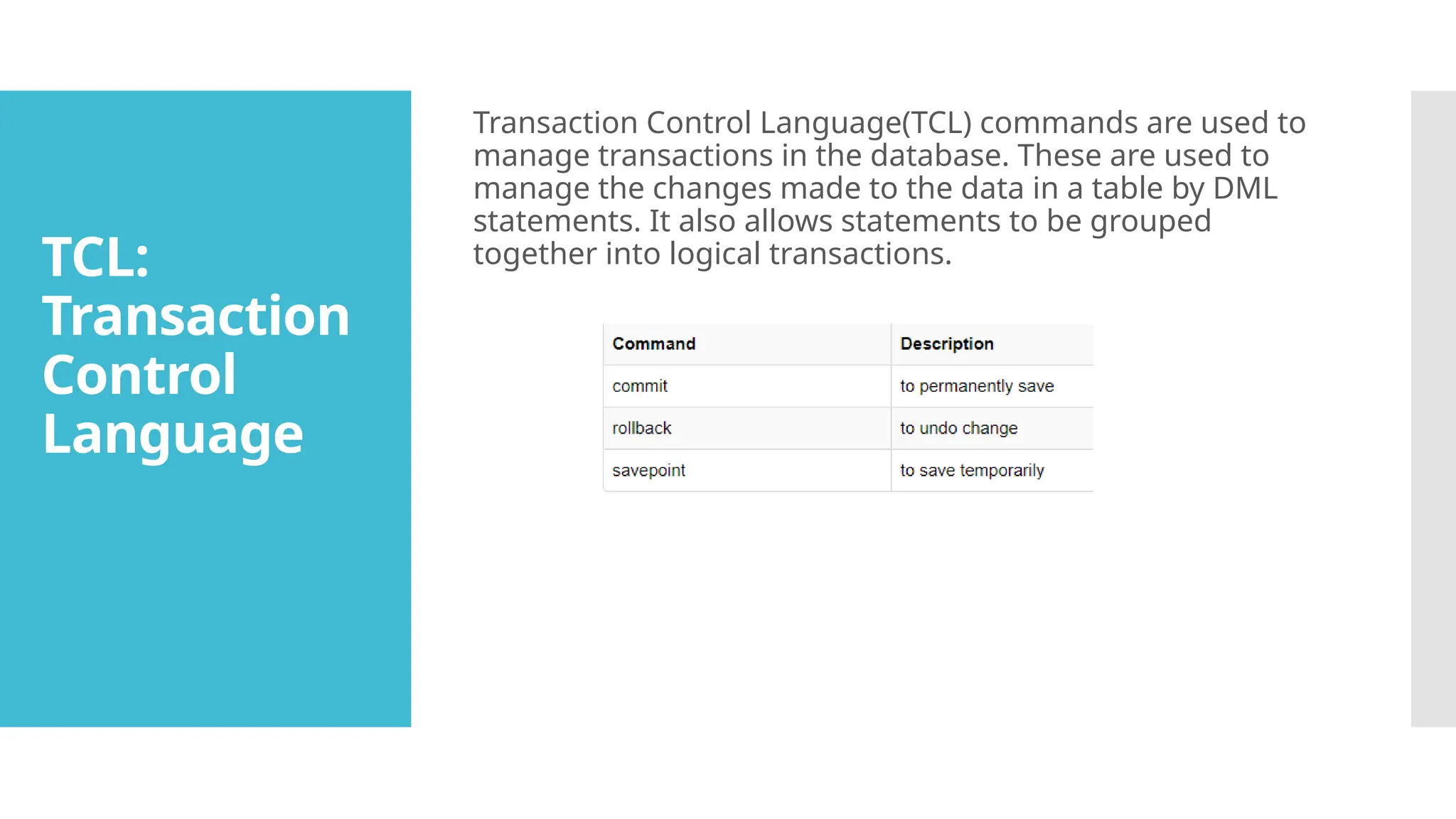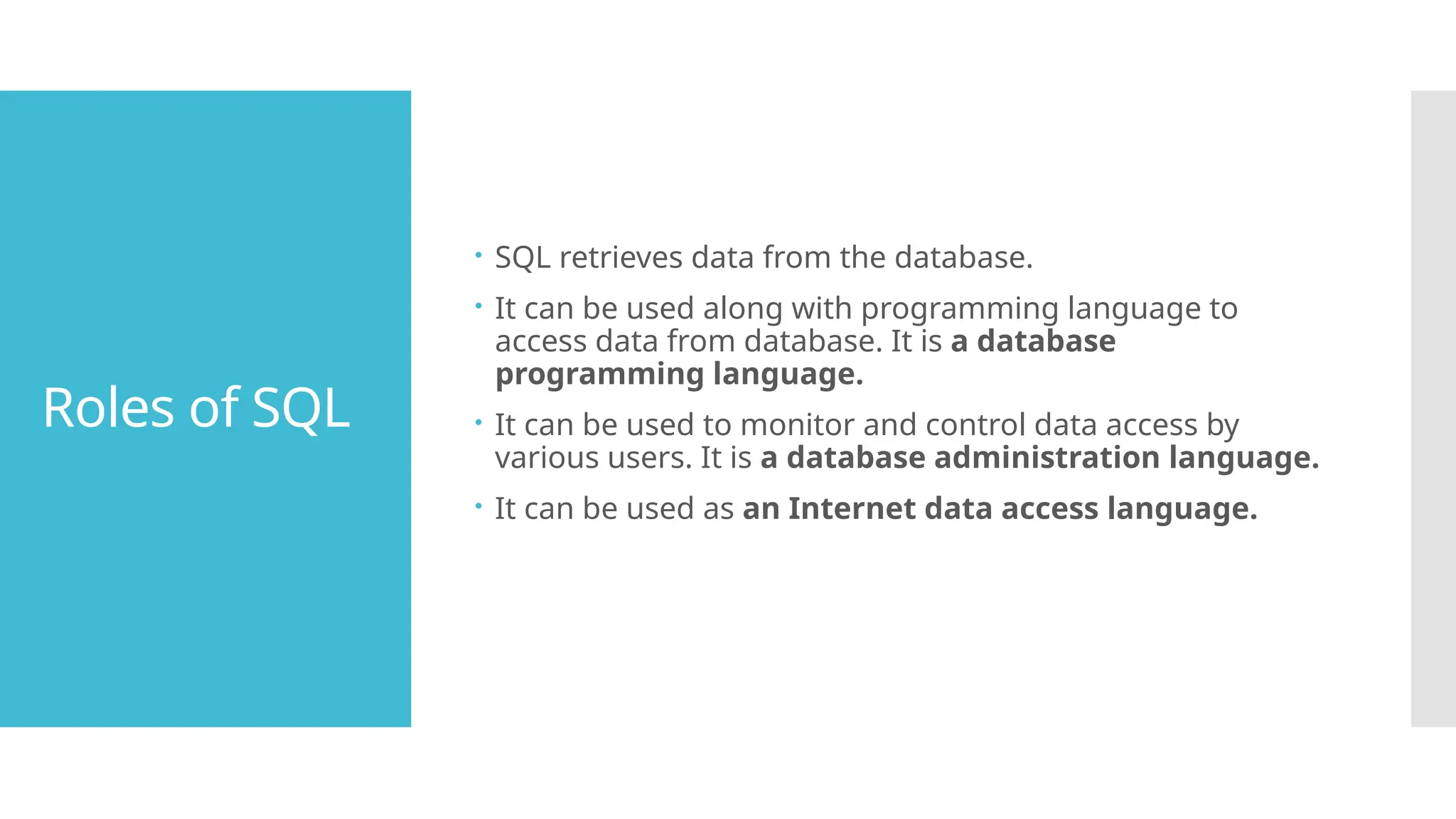Structured Query Language (SQL) is a standard database language for creating, maintaining, and retrieving relational databases. Originating from IBM in the 1970s, SQL became a standard in the late 1980s and is known for its simplicity, enabling users to perform data manipulation and control. SQL consists of various components including Data Definition Language (DDL), Data Manipulation Language (DML), Data Control Language (DCL), and Transaction Control Language (TCL) for managing database operations.
